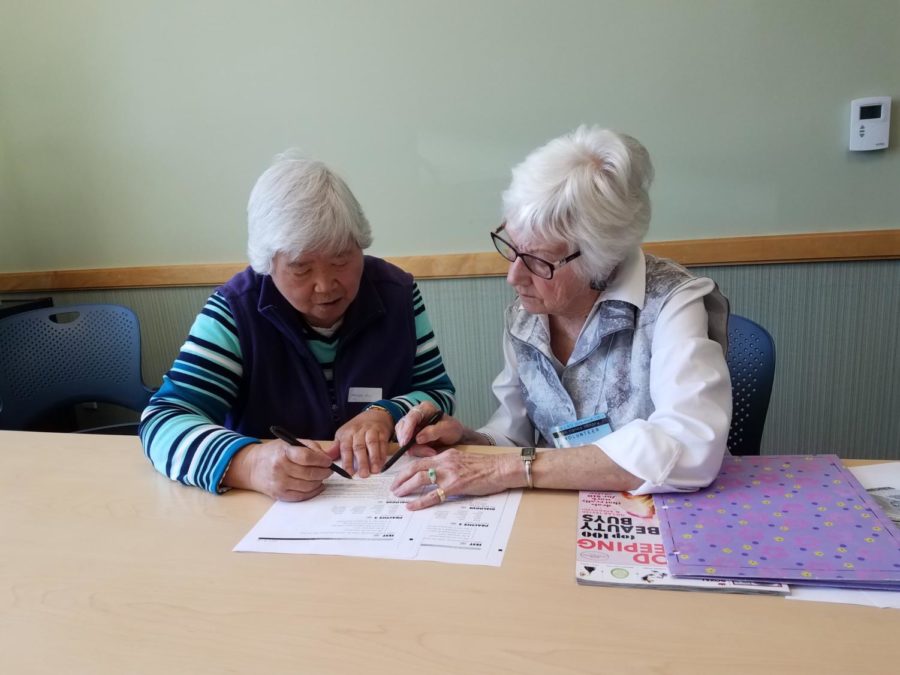America is made up of immigrants, and not all of them speak English.
The English as Second Language (ESL) Club at the San Carlos Library aims to change that by providing an opportunity for non-native English speakers to learn and practice their English. Each Saturday from 12:30–1:30 p.m., the ESL Club gathers together in Room A to learn new phrases in English and converse with others about their week.
Library assistant Shao Mei Gan said, “Our San Mateo County Libraries’ cultural values are to strengthen our communities, be inclusive in all the services we provide, and foster an environment for lifelong learning. Immigrants are part of our community, and we want to build a community of English language learners.”
Gan started the program at the San Carlos Library in February 2018. Since then, it has grown to have multiple volunteers and regular participants.
Rachel Evans, a senior librarian, said, “The library is more than just books; we’re such a diverse area that it’s important for the library to take on a role like this. It’s the connection; [the participants] come from such diverse backgrounds. Where else would you be able to converse and connect on this level?”
However, the ESL program doesn’t solely exist at the San Carlos Library. There are also other ESL Clubs available at other libraries, such as the Millbrae and Belmont Libraries.
The club is set up so that there is a native English speaking volunteer for every one or two non-native speakers. After the initial greetings and introductions, the participants are split into small groups to work with a volunteer on certain words or phrases.
Furthermore, participants can request certain topics to work on.
Munira*, one of the club’s participants said, “We are working on specific life situations such as going to the store, the situation with the doctor, etc. We are also working on a lot of new words and pronunciation.”
However, the club stresses that it is not a school course.
Gan said, “Our ESL Club is a drop-in program; we welcome participants with differing English levels and choose the theme of the conversations based on their interests.”
The club starts their meetings by chatting with the entire group about their week or something fun they did. Despite the varying levels of English speaking ability, people are still able to contribute to the discussion.
Munira said, “I stopped being embarrassed because each student is given time to speak, even if they do not understand anything.”
However, she also finds that the hour-long sessions are not enough.
“We need more hours, three times a week,” said Munira. “Systematicity is needed to strengthen the language.”
Ultimately, the goal is to make learning English an easier experience for immigrants.
Gan said, “I want to create a welcoming and inclusive environment and place for our community, especially for immigrants. They can learn and improve their English in a safe and supportive environment for free.”
*Wished not to disclose their last name


